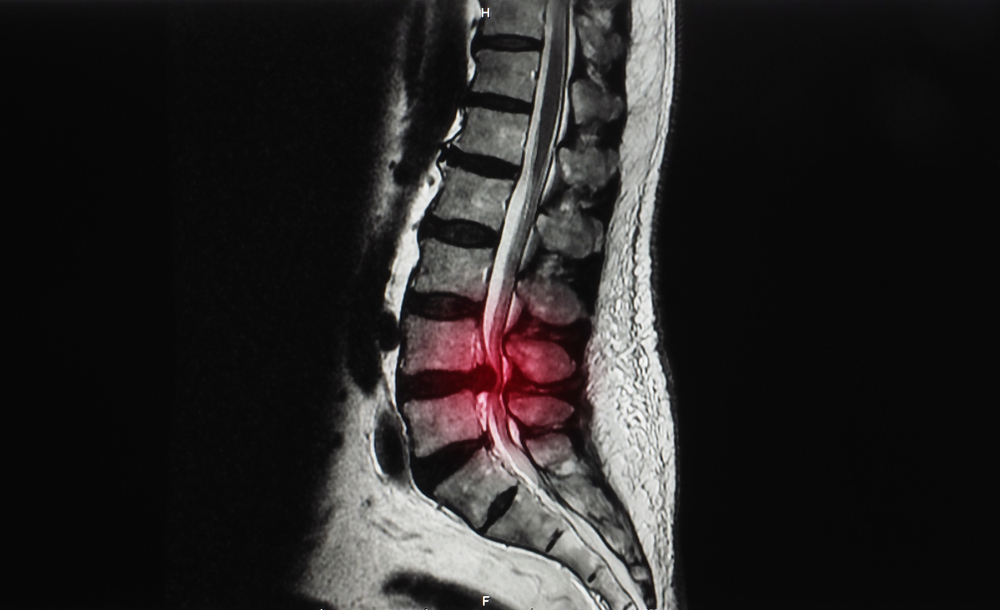
So you’ve recently been diagnosed with a herniated disc. First of all, we feel for you. At Spine Medicine & Surgery of Long Island, we know all too well how painful and unpleasant this condition can be. Also called a “ruptured disc,” “slipped disc,” or “bulging disc,” a herniated disc typically occurs in the lumbar spine (commonly referred to as the lower back) but may also affect the cervical spine (a.k.a. the neck). This condition is a leading cause of lower back pain, and can cause a whole host of other pain and neurological symptoms.
But if you’re suffering from this type of lower back pain, you’re probably wondering, how do you fix a herniated disc? Or maybe you’re asking yourself, can you heal a herniated disc naturally? Well, as your spine specialist in Nassau and Suffolk County, NY, Dr. Daniel Choi has all of the answers. In this post, we’ll answer all of your biggest questions about herniated discs, including:
- What is a herniated disc?
- What causes a herniated disc?
- What does a herniated disc feel like?
- Can exercise heal a herniated disc?
- Do I need surgery for disc herniation?
What Is a Herniated Disc?
Before we can discuss how to fix a herniated disc (naturally or with surgery), it’s important to first understand the different parts of the spinal column and the correct function of a disc. Your spine is composed of a column of bones, called vertebrae, that are stacked up on top of each other. In between each of the vertebrae lies a sponge-like layer, called a disc, that serves as a cushion and shock-absorber for your spine. These discs create a barrier and prevent the vertebrae from rubbing against each other, allowing the spine to move freely while remaining in proper alignment.
These intervertebral discs consist of a gel-like center that is surrounded by a tough outer ring of fibers. When the soft interior of the disc pushes or migrates out of the exterior shell and into the spinal canal, it’s referred to as disc herniation, sometimes called a slipped disc, bulging disc, or ruptured disc.
What Causes a Herniated Disc?
Aging
It’s completely normal for the vertebral discs to wear down as you age. The discs may dry out, become weaker or become less mobile. This natural aging process begins to narrow the distance between each vertebrae, putting the discs at a higher risk for tearing and rupture.
Improper and/or Repetitive Heavy Lifting
Any time we lift objects (and heavy objects in particular), it’s very important to have proper alignment and to use the supportive muscles of the legs to take the load of the work. Unfortunately, people often use their back muscles to lift things instead, which puts undue stress on the vertebrae and discs. Improper lifting, especially when repetitive, makes you more susceptible to disc herniation.
Gender
Men are more likely to experience herniated discs than women, particularly men between the ages of 30 and 50.
Occupation
People with physically demanding jobs have a higher risk of developing a herniated disc because of the increased load put on the spine.
Lifestyle
Certain lifestyle choices can negatively impact your spine health and increase your risk of herniated discs. This includes prolonged sitting such as a sedentary lifestyle, as well as being overweight or obese.
Genetics
If you have a family history of degenerative disc diseases, you have a higher chance of developing one or more herniated discs at some point in your life.
Spinal Injury
Excessive force to the spine, such as from a collision or fall, can result in disc herniation.
Herniated Disc Symptoms
If you’ve been experiencing lower back pain or pain in your neck, you might be wondering if you have a herniated disc. Since a herniated disc puts pressure on the spinal cord and nearby nerves, symptoms can be either painful or neurological in nature. Common symptoms of disc herniation include:
Mild-to-Severe Pain in the Lower Back or Neck
The most common symptom of disc herniation is lower back or neck pain. At the onset of the condition, the pain may sometimes only last for a few days and then go away. As the problem worsens, however, the pain will grow and become more persistent, lasting for longer periods. Movement may also increase your pain symptoms.
Tingling or Numbness
A sensation of “pins and needles” in the leg or foot is a sign of a herniated lumbar disc. If the herniated disc is in the neck, it can cause a similar tingling, numbness or burning sensation in the shoulder, arm or hand.
Pain in the Arms or Legs
Herniated disc pain may radiate down through the buttock and into the leg (sciatica) or down the shoulder and into the arm, depending on the location of the herniation. Activity will intensify this pain.
Weakness in the Arm or Leg
Weakness in the arm or leg is another symptom of disc herniation. It may even become difficult to walk and to lift, push or pull objects. In severe cases, muscle atrophy may occur.
How to Fix a Herniated Disc
At Spine Medicine & Surgery of Long Island, we prefer to take a conservative approach to treating herniated discs. Before exploring surgical options, we first try non-invasive treatments such as physical therapy, rest and appropriate medication. During your consultation and diagnostic exams, Dr. Choi will determine the best treatment plan for your specific needs. This may include:
Rest and Rehabilitation
The good news is that many patients with herniated discs heal on their own within several months with a combination of physical therapy, rest and over-the-counter non-steroidal anti-inflammatory medications (NSAIDs). However, if your herniated disc does not seem to be improving, Dr. Choi will likely recommend steroid injections and/or prescription medication to help reduce your pain and promote the healing process.
From there, if we’ve exhausted all of the non-invasive methods available and your symptoms are still not improving (or are getting worse), surgery for herniated disc may be the best option. Before going through with any surgery, Dr. Choi will explain the procedure in detail so that you know what to expect, what the benefits are and what risks there may be.
Herniated Disc Surgery
If Dr. Choi does recommend surgery for a herniated disc, you can rest assured that you are in the best hands. As a leading Harvard-trained spine surgeon in Long Island, Dr. Choi is an expert in minimally invasive techniques and offers a range of state-of-the-art procedures to treat disc herniation.
The type of spine surgery required will depend on the location and severity of your condition. If the ruptured disc is compressing the spinal nerve, Dr. Choi may perform decompressive surgery to remove the damaged portion of the disc in order to eliminate the source of your pain and give your body the opportunity to heal. He may also recommend spinal fusion, which refers to a procedure where two or more vertebrae are fused together into one continuous bone using bone grafts, metal rods and screws. This reinforces and stabilizes the spine, alleviates pain and helps you regain most of your range of motion.
You may also be a candidate for total disc replacement surgery. In this procedure, Dr. Choi will remove the herniated disc entirely and insert an artificial disc as a replacement. This approach can improve pain significantly while also restoring your function and mobility.
Our top priority at Spine Medicine & Surgery of Long Island is to help our patients achieve freedom from pain. If your herniated disc pain is getting in the way of living your life to the fullest, it’s time to talk to a spine specialist in Nassau and Suffolk County. Contact us to book a consultation with Dr. Daniel Choi today.




